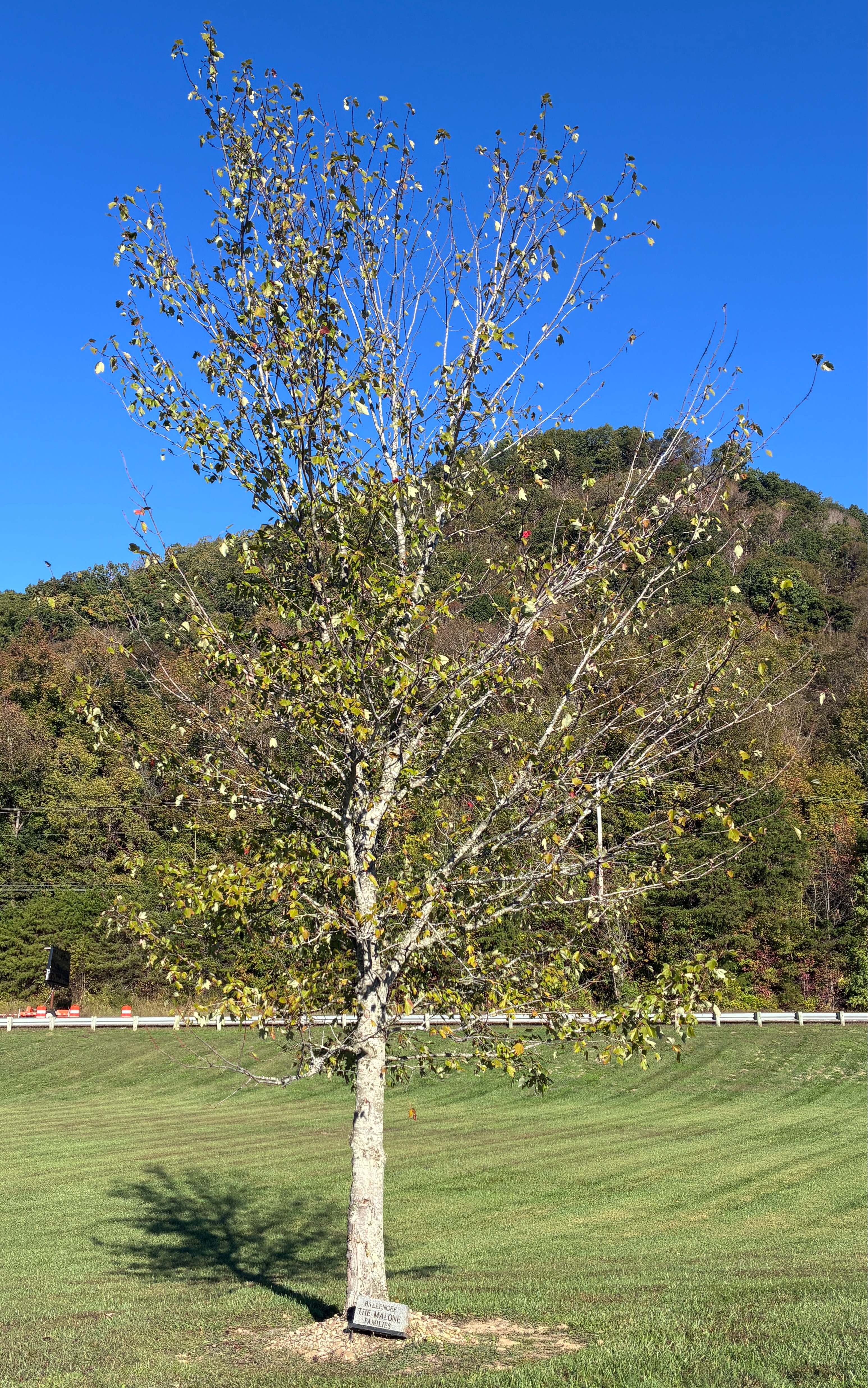
Photo Credits: Dr. Loretta W. Harvey
Scientific Name: Acer rubrum L.
Common Name: Red Maple, Scarlet Maple, Swamp Maple
Type: Deciduous
Family: Sapindaceae
Native Range: Eastern North America
USDA Zone: 3–9
Height: 40 - 60 feet (can reach 100 feet)
Spread: 30-50 feet
Bloom Time: February to April
Bloom Description: Small, dense clusters (fascicles) of flowers
Sun: Full sun to partial shade
Water: Medium to wet. Tolerates standing water.
Maintenance: Medium. Requires occasional pruning for structure, especially when young.
Leaf Type/Shape: Simple, typically 3 lobed, toothed margin. The upper side is light green, the underside is grayish.
Attracts: Squirrels and insects
Other Info: The most distinguishing feature is its spectacular color. It is one of the first trees to show fall color.
Tolerate: Tolerates a wide range of temperatures and moisture levels.
Invasive: No
Climate: USDA Zones 3-9. Tolerates a wide range of temperatures and moisture levels.
Noteworthy Characteristics: Widely planted as an ornamental tree - rapid growth and brilliant fall color. Numerous cultivars exist. Difficult to distinguish between cultivars. Provides an early season food source for bees and later becomes a food source for wildlife.
Problems: Chlorosis (Yellowing of Leaves): Can occur in alkaline soils, as it prefers acidic conditions. Can develop surface roots that lift sidewalks and make gardening under the canopy difficult. Susceptible to insect pests. Wood can be somewhat brittle and may break in severe storms, especially if the tree develops a poor structure.
Economic Uses: Widely planted as an ornamental; prized for its rapid growth and brilliant fall color. Numerous cultivars exist. The wood is classified as soft maple (along with Acer saccharinum) and is used for furniture and cabinetry where a lighter, less dense wood than sugar maple is acceptable. Although its sap can be tapped, it has a lower sugar content than sugar maple (Acer saccharum), so it is less commercially viable for production. Provides an early season for bees and later becomes a food source for wildlife.
Donated by: Ballengee and Malone Families
In memory of:
Arboretum Catalog Number: 0004-A
Photo Credits: Dr. Loretta W. Harvey

